The first purpose of this article is to demonstrate that it is possible to sell healthier versions of popular, mass-market foods at lower prices than the standard high-sugar, high-fat, high-calorie products that contribute to global obesity.
The second purpose is to show that companies would make more money by doing so.
Making the healthier choice the cheaper choice is a new approach to healthy eating, designed to reduce the inequalities between the poor and the affluent, in obesity and all diet-related diseases.
It is also new – for the public health world – in trying to incentivise food manufacturers and retailers, rather than criticise and control them.
The Necessity and Feasibility of a New Strategy
We certainly need a new nutrition policy. For three decades, in most developed countries, people have been getting heavier. In the UK, over 60% of adults are now overweight or obese. And over a third of primary school leavers. At all ages, the poor weigh more.
Informing, educating and exhorting consumers to eat better — to choose different foods — has been the dominant strategy everywhere. It has failed. We grow fatter and fatter[i].
Consumers are more likely to buy nutritionally improved options if they cost less. Companies are more likely to support health initiatives if they make money by co-operating. The challenge is to provide economic incentives for buyers and sellers, simultaneously.
We will prove the feasibility of this dual strategy, using new data on the costs, prices and margins of soft drinks. These products are the largest source of sugar in the diets of the UK[ii], the US[iii] and many other countries. They contribute to excess calories, and also to rotting teeth.
Healthier variants of popular products normally sell at heightened prices. The rationale from manufacturers is that nutritionally modified versions cost more to make, so this must be reflected in retail prices.
Sometimes perhaps, but not always. Even where product reformulation involves removing sugar and fat, or substituting less expensive alternatives — as in the parade of no, low, reduced, diet, light, zero, “free from” and “calorie controlled” products — lower costs seldom convert into lower prices.
Instead, many companies add extra margin onto healthier variants. They charge a “health premium”. The commercial logic is that many nutritionally aware consumers are affluent and willing to pay more for better foods. But the consequence is the nutritional exclusion of the poor.
The two central components of the new alternative strategy are: (i) improve the nutritional quality (“nutrient profiles”) of the mass-market foods that most people eat most of the time, then (ii) give consumers a price advantage for buying the healthier versions.
Soft Drinks: A Health Profile
Soft drinks are simple products. The four main types are: carbonates, dilutables, juice drinks, and still products. All are mostly water, plus flavourings and additives.
The pivotal ingredients for public health are sugars and sweeteners. In Europe, sucrose remains the dominant sugar. But in North America, it has been displaced by glucose syrup, now mostly the sub-type known as “high fructose corn syrup” (HFCS). In Britain, Coca-Cola and Pepsi both use 10·6g sugar/100ml, in North America slightly more HFCS. The most popular size on both continents, the two-litre bottle, contains over 200g sugar and more than 800 calories.
Sweeteners can replace all those sugars and calories. Aspartame is the most widely used sweetener internationally. But it is often combined with acesulfame potassium (AceK), because they have a synergistic effect, intensifying sweetness.
Food additives are always controversial, sweeteners more than most, aspartame most of all. It has been accused repeatedly, over decades, of causing everything from cancer to dizziness. No charges have ever been accepted as “established science”[iv].
The sweetener is now approved in more than 100 countries. In 2012, the American Heart Association and American Diabetes Association jointly endorsed it[v]. The European Food Safety Authority (EFSA) has just published the most comprehensive assessment of aspartame ever conducted[vi]. It concluded that aspartame is safe.
Thus, on current evidence, the proven health risks of sugar greatly outweigh any potential risks of aspartame. This is not to say that sweeteners are “healthy” per se, just that eating too much sugar is demonstrably riskier. So, in the midst of an obesity epidemic, sugarfree drinks with sweeteners are preferable choices to products with sugar[vii].
Soft drinks are among the most widely distributed products on earth, available not only in food shops, but garages, cinemas, newsagents, convenience stores, vending machines, street stalls, mobile vans, kiosks, restaurants, bars, takeaways, canteens, sandwich shops, and significantly, schools. Easy accessibility contributes to their popularity – and to the obesity problem.
The Core Economics of Colas
Colas are the most popular soft drink, by far. This section compares sugared and sugarfree colas on production costs, retail prices and the profit margins in between. All are expressed initially in US dollars, because that is the currency in which international commodities are traded. Then, figures are standardised on the most common 2l bottle.
COSTS OF PRODUCTION: the average international price for sugar during 2012 was 26·5¢/lb[viii]. PepsiUK uses 212g in two litres, costing 12·4¢.
For large buyers in North America, the average price of HFCS last year was 27·9¢/lb[ix]. Pepsi uses 231g of HFCS per 2l bottle, an ingredient cost of 14·2¢.
The cost of aspartame to large buyers is $17/kg. AceK wholesales for $9/kg[x]. Sugarfree drinks use a maximum 1g of sweeteners per 2l, less in blends[xi]. Percentages vary between products. The maximum cost of sweetener in all-aspartame products, like US Diet Pepsi, is 1·7¢/2l bottle[xii]. In a 50-50 blend, it falls to 1·3¢.
Because sweeteners cost less than sugars, sugarfree colas are cheaper to make than sugared drinks. In the UK, the saving on production costs last year was around 11¢/2l, in North America approximately 12·5¢/2l.
RETAIL PRICES: the pricing of soft drinks is complex, with multiple and frequent promotional reductions. But always and everywhere, whether at full price or on discount, sugared and sugarfree varieties sell at the same price. This is “parity pricing”, justified as giving consumers “freedom of choice”. At present, the non-promotional price for both types of Coke and Pepsi in Britain is around £2/2l.
Retailers also maintain parity between sugared and sugarfree for their cheaper own label products. In addition, the four principal supermarket groups in Britain offer a variant not on sale in the US (yet) — “value” colas, with the most common price being 17p/2l. These are all sugarfree products. It is evidently impossible to sell a sugared drink at that price.
With that single exception, the lower manufacturing costs for sugarfree colas are not converted into lower retail prices for these variants. Companies add extra margin onto no-calorie options.
MARGINS AND PROFITS: margins on soft drinks are large. Companies still make a profit selling sugarfree colas in Britain at 17p/2l. But leading brands routinely charge over 1000% more.
There are several components in cola margins, split between manufacturers and retailers. Here, we concentrate solely on the extra margin made possible by differential production costs, because hard numbers prove our point beyond reasonable doubt.
Currently, all savings on the costs of sugarfree drinks are converted into extra profit. In Britain, almost 1·6-billion litres of sugarfree cola were sold in 2012, so companies made $86-million additional income (£52-million at today’s exchange rate) from the additional margin on these drinks[xiii].
That sounds like easy money. In fact, it is less than they would have made from behaving with more economic rationality for themselves and more social responsibility for public health.
Because they take an extra 11-12.5¢ on every two-litre bottle of sugarfree, manufacturers and retailers would increase profits by shifting sales away from sugared products.
At present, only 45% of British cola sales are sugarfree[xiv]. Our estimate is that companies would increase profits a further $105-million annually (£64-million) if sales were entirely sugarfree.
But similar extra margins apply to all soft drinks, not just colas, so the industry could make roughly $300-million more each year (£182-million) on their whole product ranges.
In the larger US market, almost 69-billion litres of soft drinks were sold in 2011. Three-quarters were carbonates, but only 29% of these were sugarfree (“diet”)[xv]. Thus, the comparable loss for American companies, on carbonates alone, exceeds $2-billion annually.
For 30 years, on both sides of the Atlantic, the market share of sugarfree drinks has been growing. Last year, 66% of PepsiUK sales were the sugarfree Max and Diet sub-brands. Yet the Big Two still exert a significant part of their promotional effort to defend the declining market for sugared products. They are protecting historic brands rather than improving the bottom line…or improving health.
Companies would increase total profits if they shifted all sales to sugarfree. This is not fantasy. Over recent decades, without controversy, in most countries, chewing gums have been reformulated from sugared products almost entirely to sugarfree, mainly using aspartame.
But companies continue to push lower-margin sugared drinks. They manage to stimulate obesity, exploit customers, and reduce profits, all at the same time. This is a lose-lose-lose strategy.
Common Sense on Colas
There is a better way, for both consumers and companies, for public health as well as private profit. The key is to create a price differential between healthier and less healthy products. That can be done by raising the price of “bad” foods, lowering the price of “good” foods, or both.
IF the soft drinks trade eliminated part of the higher margin on sugarfree drinks, this would create a visible price differential in favour of no-sugar, no-calorie products, noticeable at the point of purchase. That would give consumers, especially poor consumers, an economic incentive to buy sugarfree — saving money. But companies would still make more profit than on sugared drinks.
Moreover, value added and sales taxes on sugarfree drinks (always levied as a percentage of the price) would be reduced. This would widen the price differential in favour of no-calorie products by an additional 1-3¢/2l.
Over time, market forces would be expected to shift sales towards sugarfree, and each transfer would generate additional profit. Companies could accelerate the process by changing the balance of marketing expenditure.
Excise taxes could also play a role in such a strategy. A “soft drink tax” imposed only on sugared products, with sugarfree exempted, would raise prices for less healthy options, further increasing the price differential.
Food taxes alone, by punishing apparently simply pleasures, provoke political resistance from consumers as well as companies –– as the “pasty tax” revolt last year demonstrated. But, if excise taxes on sugared drinks were introduced at the same time as margin reductions on sugarfree products, they would together produce much wider price differentials, bigger savings. This is akin to the strategy of raising taxes on leaded petrol that successfully shifted demand to unleaded fuel.
It might seem perverse, but economically rational companies should support rather than oppose such taxes. They would sell even more sugarfree and make even more money if they did.
A New Strategy for Healthy Eating
Soft drinks are nutritionally important products in their own right. But they also illustrate the feasibility of an alternative two-pronged approach to public health nutrition — combining product reformulation of popular foods with economic incentives, for both consumers and industry. The distinctive feature of this analysis is that a key vehicle to create the incentives is the adjustment of corporate margins.
This new model is applicable broadly. In developed countries, the majority of the foods eaten are processed products[xvi]. Most could be nutritionally improved; many healthier alternatives could be made and sold more cheaply.
Three features of this new approach may be outlined briefly. First, it involves changing foods, as well as changing people. These are complementary strategies: one works on producers, the other on consumers; one on supply, the other on demand; one stimulates different food choices, the other improves the nutritional quality of the products people prefer now.
Second, it uses material as well as moral incentives. The usual promises of nutrition are better health, longer life, appropriate weight. They motivate some but, visibly, not all. However, in a materialist world, consumers and producers alike respond to price incentives. They should become central components in any healthier eating strategy.
The emphasis here is on price differentiation, cutting the extra margins commonly added onto healthier products. The advantage is that it produces self-evident savings for consumers. It rewards the good rather than punishing the bad.
That is potentially positive for profits too. By carefully managing margins, the strategy delivers benefits to both companies and consumers. Public health and private profit could push in the same direction — for once.
The World Health Organization urges making the healthy choice the easy choice[xvii]. Given the gross inequalities in the world, we must go further. We must align food prices with health priorities: make the healthy choice the cheaper choice.
Authors: David Sweanor, Samantha Hogg, Vivian Welch, Jack Winkler
Notes
[i] Winkler J (2013), A brutally pragmatic approach to food, BMJ; 346:f3728.
[ii] Bates B, Lennox A, Swan G (2010), National Diet and Nutrition Survey: Headline Results from Year 1 of the Rolling Programme (2008/2009), Table 5.8.
[iii] Welsh J, Sharma A, Grellinger L, Vos M (2011), Consumption of added sugars is decreasing in the United States, Am J Clin Nutr, 94, 726-34, Table 3.
[iv] Health Canada, Aspartame,
http://www.hc-sc.gc.ca/fn-an/securit/addit/sweeten-edulcor/aspartame-eng.php
[v] Gardner C, Wylie-Rosett J, Gidding S, Steffen L, Johnson R, Reader D, Lichtenstein A (2012), Nonnutritive Sweeteners: Current Use and Health Perspectives: A Scientific Statement From the American Heart Association and the American Diabetes Association, Circulation, online 9 July.
[vi] EFSA Panel on Food Additives and Nutrient Sources added to Food (2013), Scientific Opinion on the re-evaluation of aspartame (E 951) as a food additive. EFSA Journal 2013;11(12):3496
[vii] de Ruyter J, Olthof M, Seidell J, Katan M (2012), A Trial of Sugar-free or Sugar-Sweetened Beverages and Body Weight in Children, N Engl J Med, DOI: 10.1056/NEJMoa1203034
[viii] London International Financial Futures and Options Exchange (LIFFE). Historical trends are summarised in USDA/ERS, Sugar and Sweeteners Yearbook, Table 2.
[ix] US Department of Agriculture, Economic Research Service, Sugar and Sweeteners Yearbook, Table 9, for HFCS-55 (the variety used by the soft drinks industry). The table lists HFCS-55 prices in dry weight. But for soft drinks, wet weight is appropriate. This is 77% of the dry price.
[x] Personal communication from industry sources.
[xi] American Cancer Society, corroborated by manufacturers, http://www.cancer.org/Cancer/CancerCauses/OtherCarcinogens/AtHome/aspartame.
[xii] Ingredients for PepsiCo products in the US appear on the website, http://www.pepsicobeveragefacts.com/infobyproduct.php. Two litres of Diet Pepsi contain 1g of aspartame. Two litres of PepsiMax have 693mg aspartame and 180mg AceK. There is no equivalent website for the company’s UK products.
[xiii] Our calculations, here and for all UK drinks below, are based on combining estimates by Zenith International and the British Soft Drinks Association in “The 2013 UK Soft Drinks Report”, whose statistics were also prepared by Zenith.
[xiv] Personal communication from Zenith International.
[xv] Personal communication from Beverage Digest.
[xvi] Moodie R, Stuckler D, Monteiro C, et al (2013), Profits and pandemics: prevention of harmful effects of tobacco, alcohol and ultra-processed food and drink industries, Lancet, online 12 February, http://dx.doi.org/10.1016/S0140-6736(12)62089-3
[xvii] World Health Organization (1986), The Ottawa Charter for Health Promotion.
FOR FURTHER INFORMATION, CONTACT:
David T Sweanor J.D.
Adjunct Professor, Faculty of Law, University of Ottawa, Canada
Mobile: (++1) (613) 799-0665
Home: (++1) (613) 526-2079
OR
Jack Winkler
Former Professor of Nutrition Policy, London Metropolitan University
Phone: (++44) (0)20-7226-1672







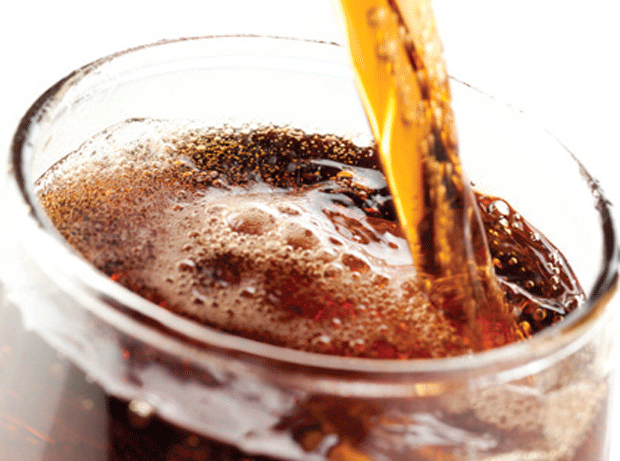
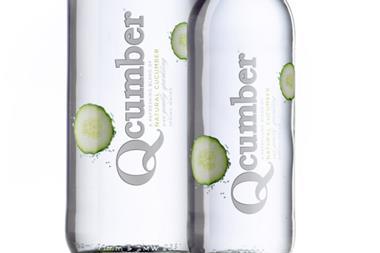
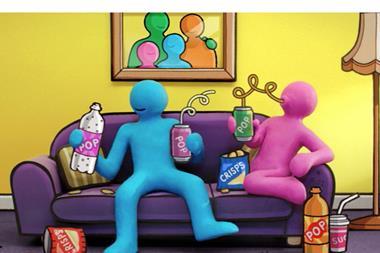
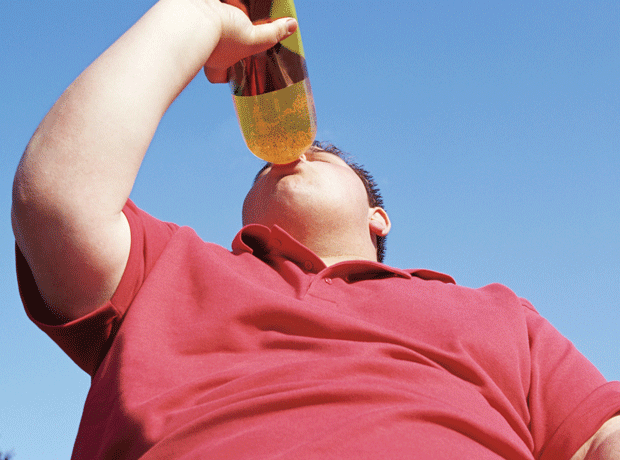

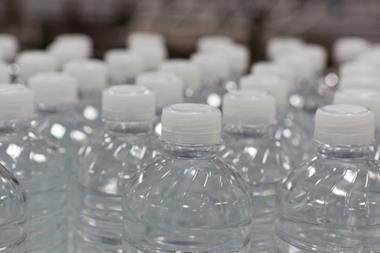






No comments yet